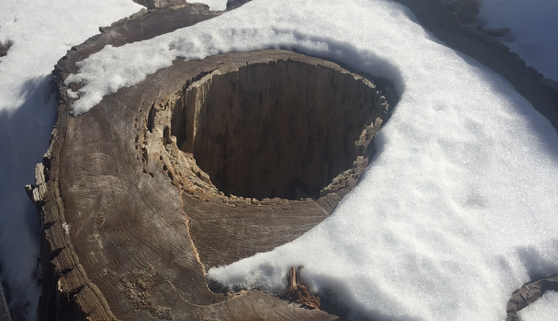
Don’t judge a tree by its cover: Winter tree & EAB treatment guide
DENVER — Although winter is the time when trees go dormant, it is a good time to start planning for tree care. It might be hard to tell in the winter, but not all ash trees are healthy and thriving. They may look okay on the outside, but the inside might be another story, and no matter the time of year a tree professional can help assess your tree.
For example, a large ash tree in Louisville was recently removed causing a bit of stir in the neighborhood. The tree provided valuable shade to neighboring houses close to the downtown area. But, despite the healthy exterior, what couldn’t be seen on the outside was that the center of the tree was hollow. A hollow tree can be a major safety issue.
“A cavity in a living tree can contribute to a tree being unsafe,” said Sara Davis, Urban Forestry Manager, Office of the City Forester, City and County of Denver. “When a tree develops problems, it is frequently difficult to decide when to replace or remove it. The one option you shouldn’t consider, however, is treating or replacing your ash tree yourself if you’re not a licensed tree professional.”
Davis did share a few tips for how residents can protect their ash trees and help trees survive the winter season.
- Mulch – Add a thin layer (no more than 2 inches) of mulch around the base of the tree
- Water – Keep trees, especially smaller or newly planted trees, well watered until the ground freezes
- Prune – Pruning trees during dormancy can help prevent the spread of disease. You can also easily see the tree’s structure and identify problem branches.
- Treat – Residents who want to keep their ash trees should work with a licensed and insured arborist or tree service company on an Emerald Ash Borer treatment plan. Treatment, which is 90 percent effective, must be repeated every 2-3 years. Choose from this list of approved tree services and get information about state licensing.
